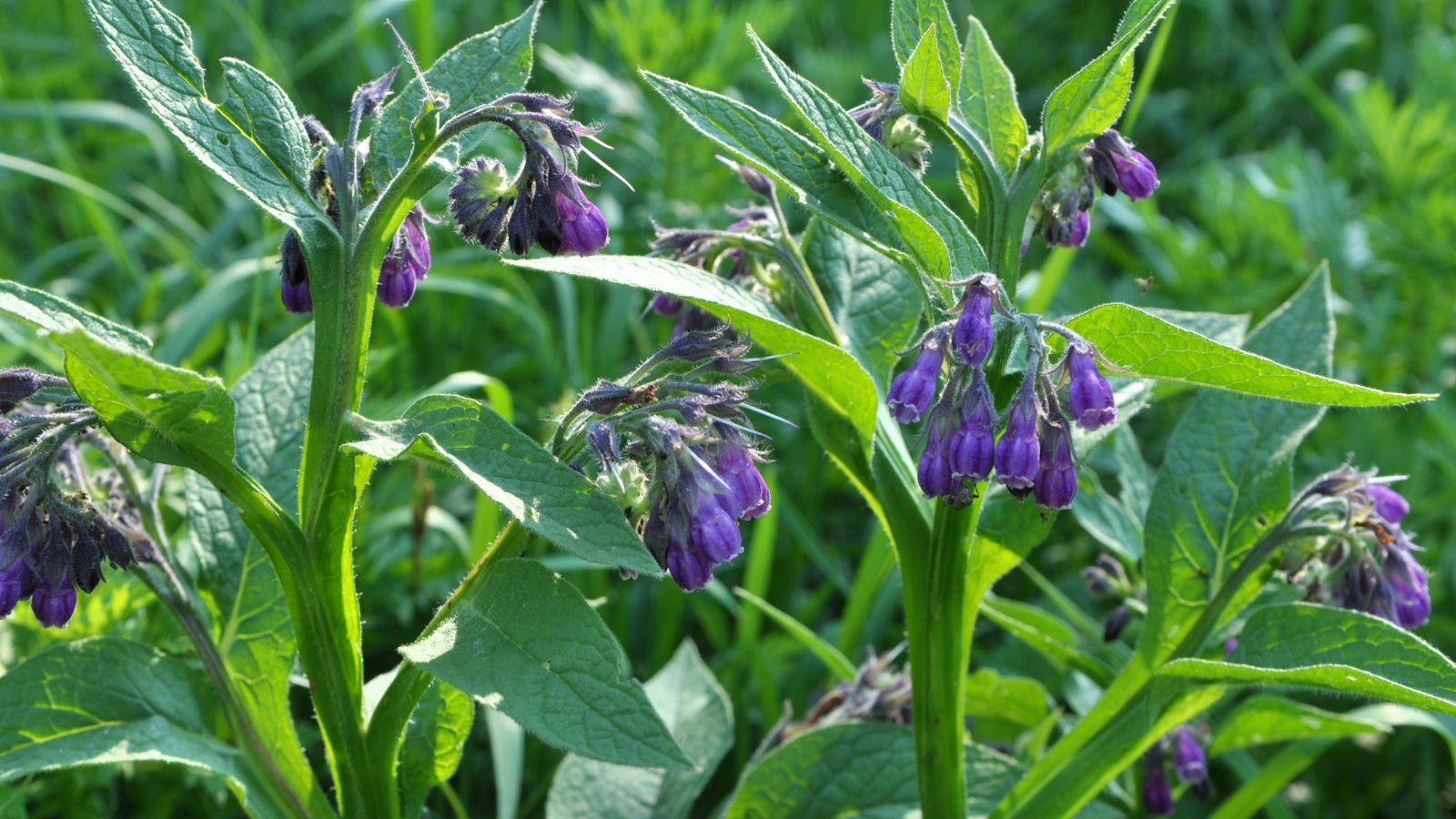[ad_1]
Used as a mulch, fertilizer, compost accelerator, pollinator attractor, and clay soil breaker, the comfrey plant is a helpful addition to a yard. As long as you don’t reside throughout the plant’s invasive differ, you can purchase quite a few revenue from planting it.
The first comfrey shoots appear in spring. By June it has grown waist extreme with a large number of pretty bell-shaped, pink to purple flowers, every with a tiny bee’s bottom protruding from the highest as they feast on the rich comfrey nectar.
I let the bees feast for a few weeks sooner than taking my first harvest, slicing the stalks at flooring stage after which roughly chopping in order so as to add a much-needed nitrogen improve to my chilly, carbon-rich sleepy compost.
Inside a few weeks, new leaves have sprouted 12-15 inches prolonged and are ready for harvesting to feed the now-hungry vegetable and fruit crops. Comfrey foliage is rich in potassium and trace minerals, magnesium, and calcium, wonderful for tomatoes, peppers, and pumpkins.
And so, the cycle begins for at least one different two harvests. That’s a minimum of three to 4 harvests per season. What’s to not love about comfrey?
Overview
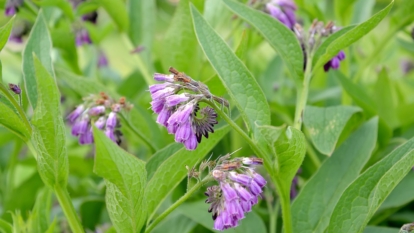

|
|
|
|
What’s Comfrey?
Comfrey is a hardy herbaceous perennial and a member of the borage family, Boraginaceae, which includes borage, forget-me-nots, echium, brunnera, and cerinthe.
There are two basic species of comfrey, Symphytum officinale, additionally known as widespread comfrey native to Europe and Asia, and Russian comfrey (Symphytum x uplandicum), a naturally occurring hybrid first present in Upland, Sweden throughout the 1800s. It has naturalized in elements of Canada. S. x uplandicum is a cross between widespread comfrey and Symphytum asperum, the blue-flowered robust or prickly comfrey originating in Russia.
Widespread comfrey has been cultivated since historic Greek and Roman events when it had medicinal use primarily as a poultice to heal broken bones, bruises, and completely different accidents, due to this fact the widespread names knitbone, knitback, and bruisewort.
Traits
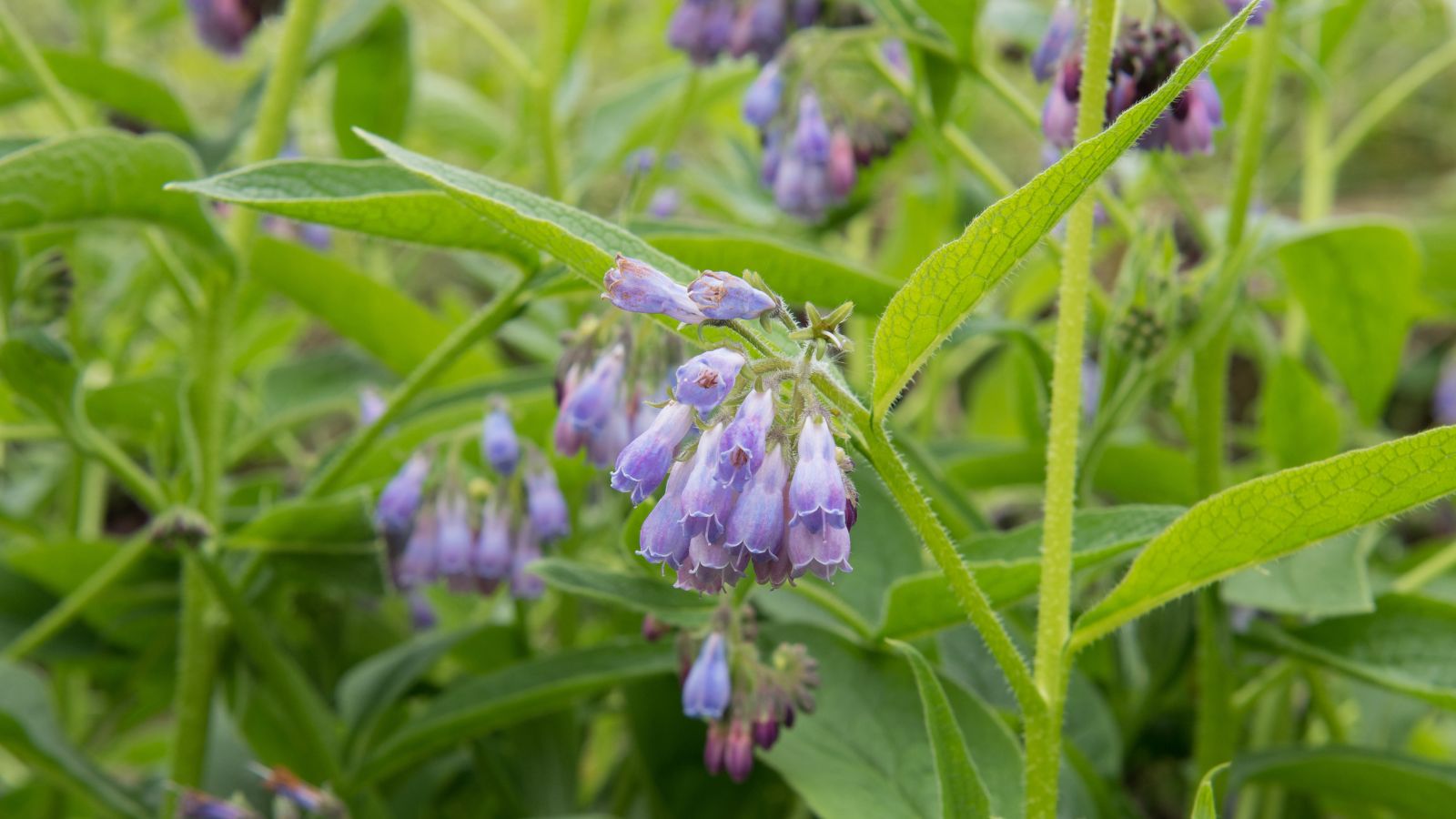

Although associated in look and cultivation, there are some key variations between widespread and Russian comfrey. Widespread comfrey can reproduce by the use of seed dispersal, making it invasive in certain elements of the world. Russian comfrey flowers are sterile, because of this reality propagation is through cuttings and division. Russian comfrey leaves are larger, producing better yields.
The first inexperienced shoots of comfrey emerge out of your yard mattress as basal growth from its crown in mid-spring. It shortly sorts a giant clump with leaves 12 to fifteen inches prolonged, lance-shaped, inexperienced, and roughly textured with a whole lot of tiny prickly hairs that could be a pores and pores and skin irritant.
As late spring ebbs away and the temperatures rise within the course of summer season, thick branching flowering stalks push up from the crown with smaller leaves. Clusters of drooping tubular bell-shaped flowers appear, ranging in shade from yellow, pink, purple, and blue, counting on the species. At full high, comfrey can attain three to 4 toes.
Comfrey dies once more naturally after flowering. The heavy stalks sometimes collapse and are shortly modified by new shoots. Slicing once more the plant sooner than it goes to flower will tempo up the strategy of regrowth. Chilly autumn temperatures provoke winter dormancy.
Cultivars
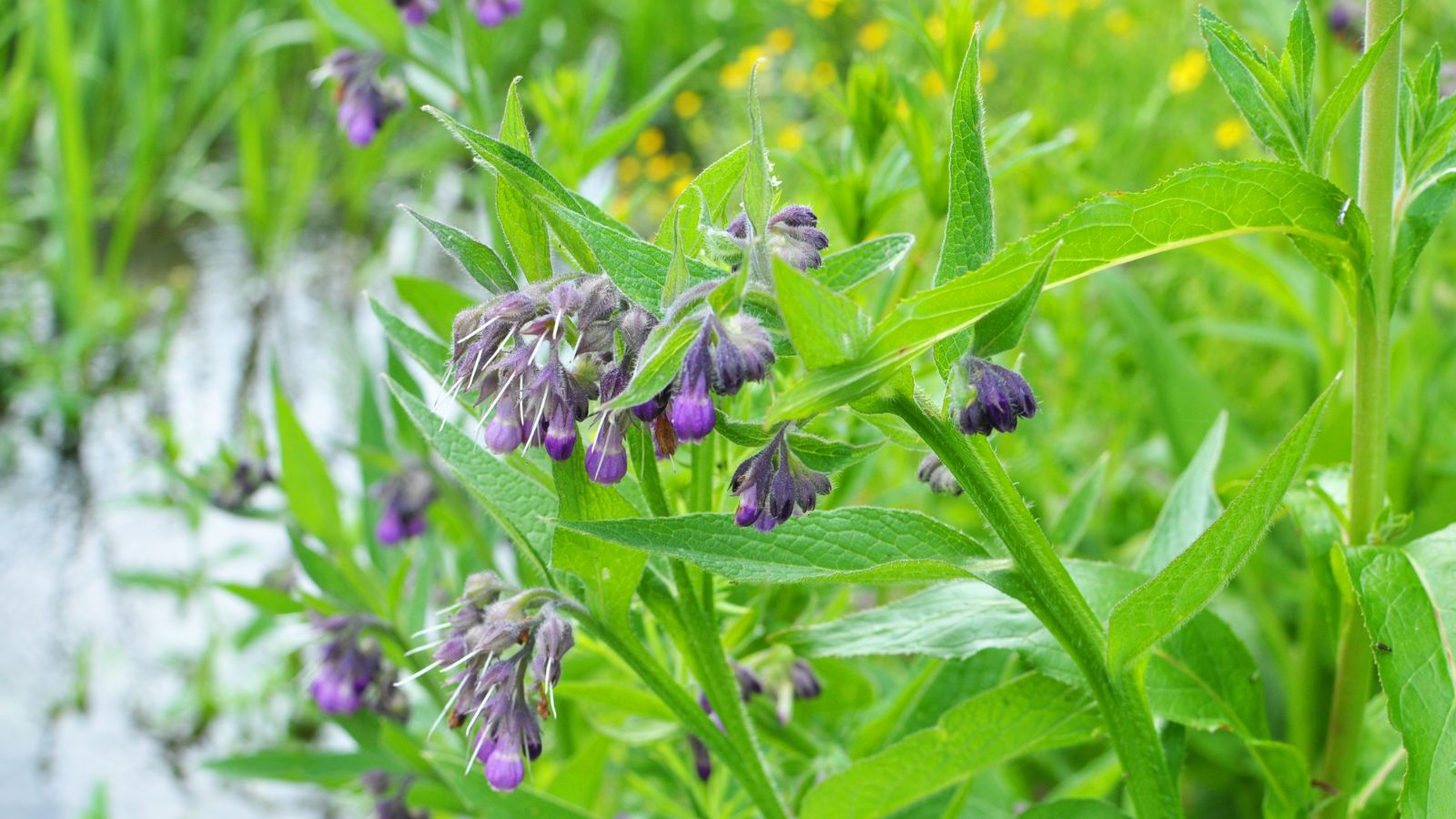

Species of comfrey to look out for embody:
- Bocking 14: An excellent choice to utilize as a mulch or liquid fertilizer for fruiting crops ensuing from its extreme potassium content material materials. This comfrey incorporates 7.09% potassium as compared with 3.09% with completely different types of widespread comfrey.
- Hidcote Blue: A beautiful border perennial rising to roughly 20 inches tall and two toes in depth.
- Axminster Gold: A variegated cultivar with prolonged inexperienced leaves with yellow margins standing 18 inches.
Makes use of
Comfrey is the star of any permaculture yard, significantly the variability ‘Bocking 14’. The one draw back with rising comfrey is sustaining with harvesting your yard. Listed under are a few strategies to utilize comfrey in your yard areas as a multipurpose plant:
Mulch
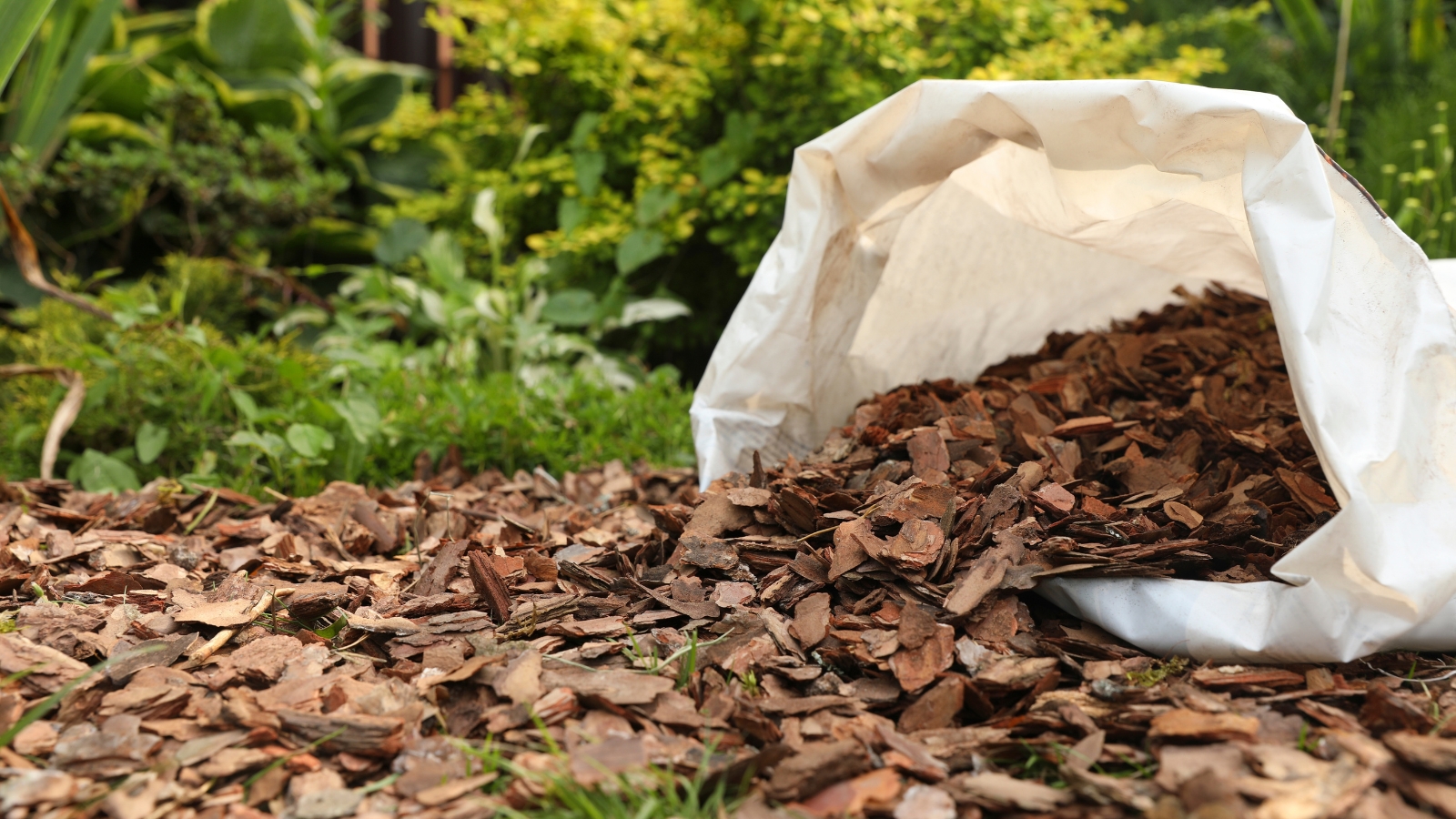

Mulches help retain moisture and add bulk and nutritional vitamins to the soil. Comfrey mulch does all of this with a mega improve of nitrogen and potassium. Merely chop and drop!
Comfrey Tea
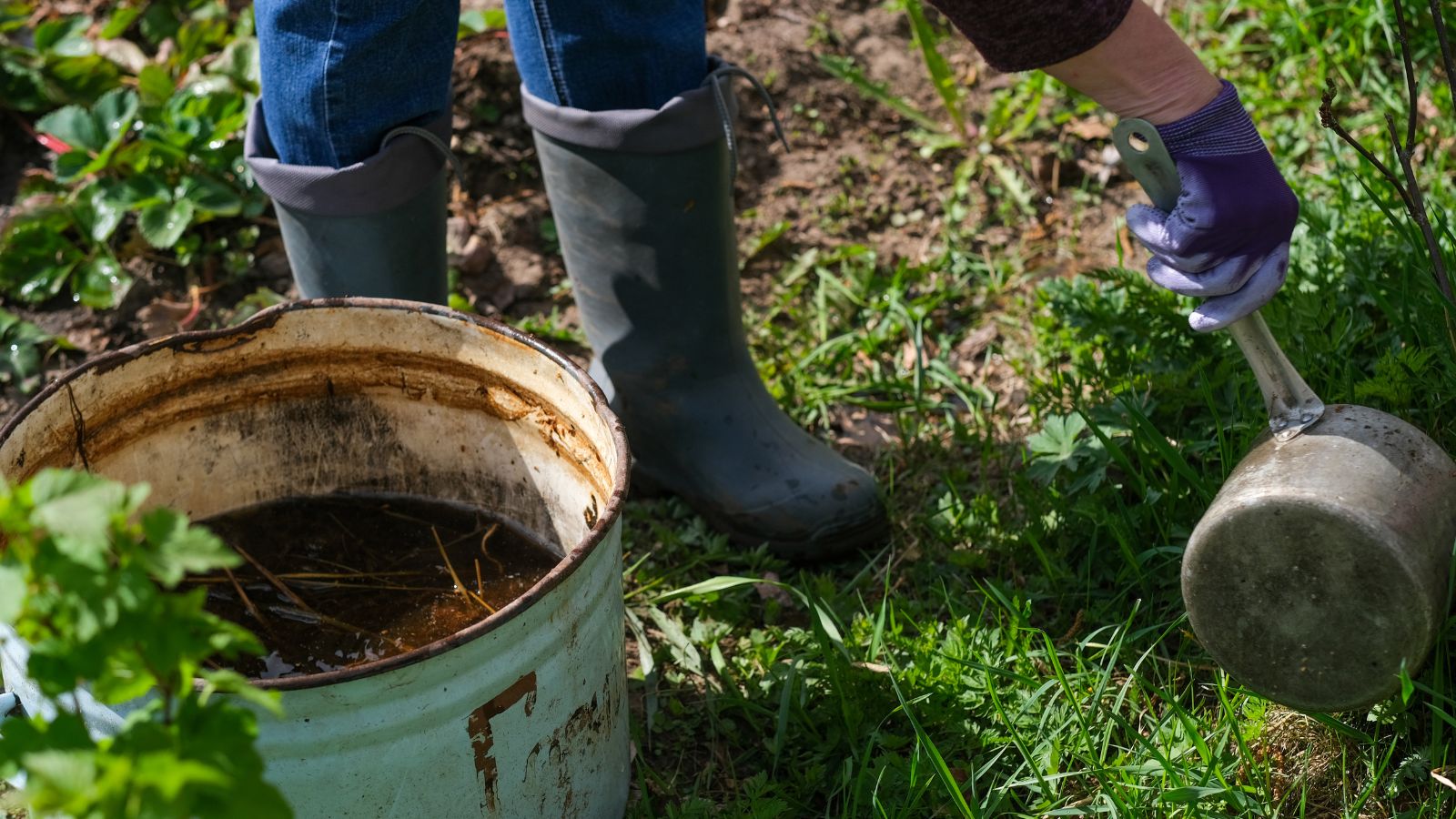

Make this fertilizer by steeping leaves in water for as a lot as six weeks. You’ll notice it’s ready when the mix turns into slimy and smells like rotten eggs. Strain the liquid and dilute to a ratio of 1:10. The longer the leaves steep, the stronger and darker the tea.
Comfrey Focus
This takes considerably longer than comfrey tea nonetheless will retailer for as a lot as a yr. To make concentrated fertilizer, compress the leaves with weights over a lot of months to provide a thick, darkish concentrated liquid.
You can compress the leaves in a bucket or pipe and drain the concentrated liquid proper right into a bottle for storage. Dilute focus to a ratio of 1 half focus to forty elements water.
Compost
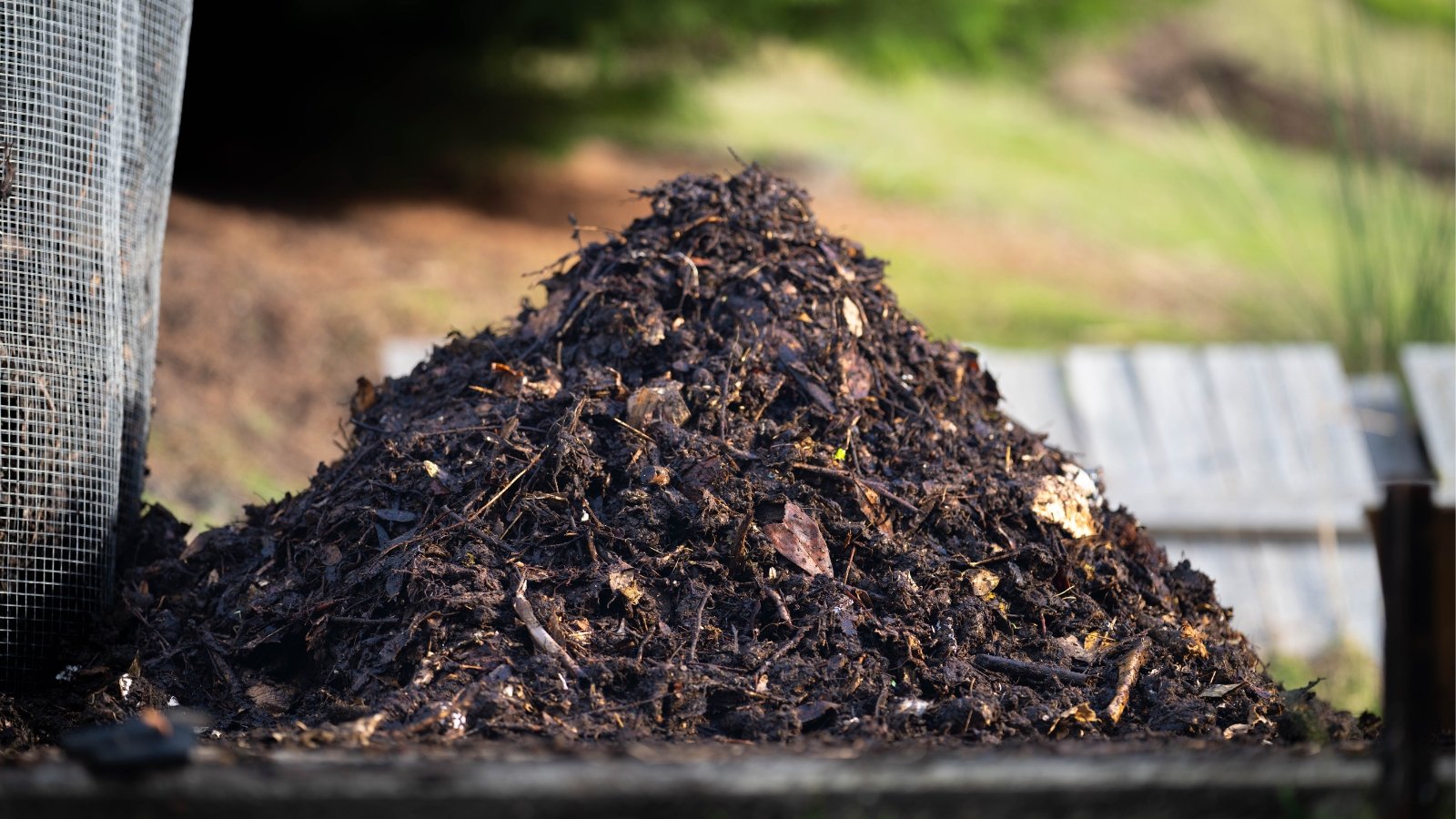

Current leaves help to steadiness the nitrogen/carbon ratio in compost and help to hurry up decomposition.
Powder
Dried comfrey leaves are easy to crumble to provide comfrey powder. Rake the powder proper right into a prepared mattress just a few weeks sooner than planting.
Inexperienced Manure
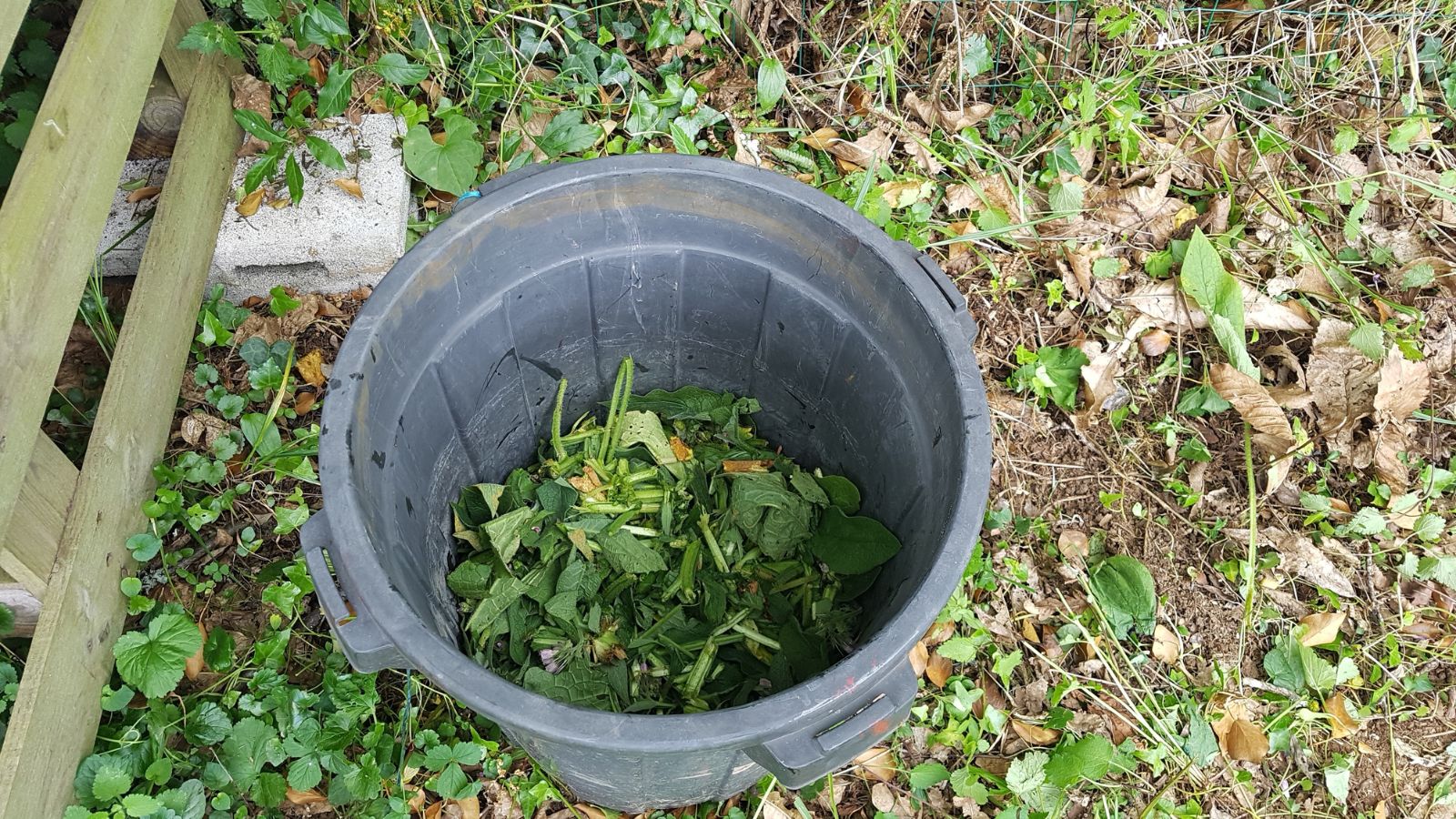

Develop comfrey as a inexperienced manure by tilling the foliage into the soil when the plant continues to be youthful, together with helpful biomass and nutritional vitamins once more into your soil. This system is simply not with out its points, which we’ll concentrate on later.
Biodiversity
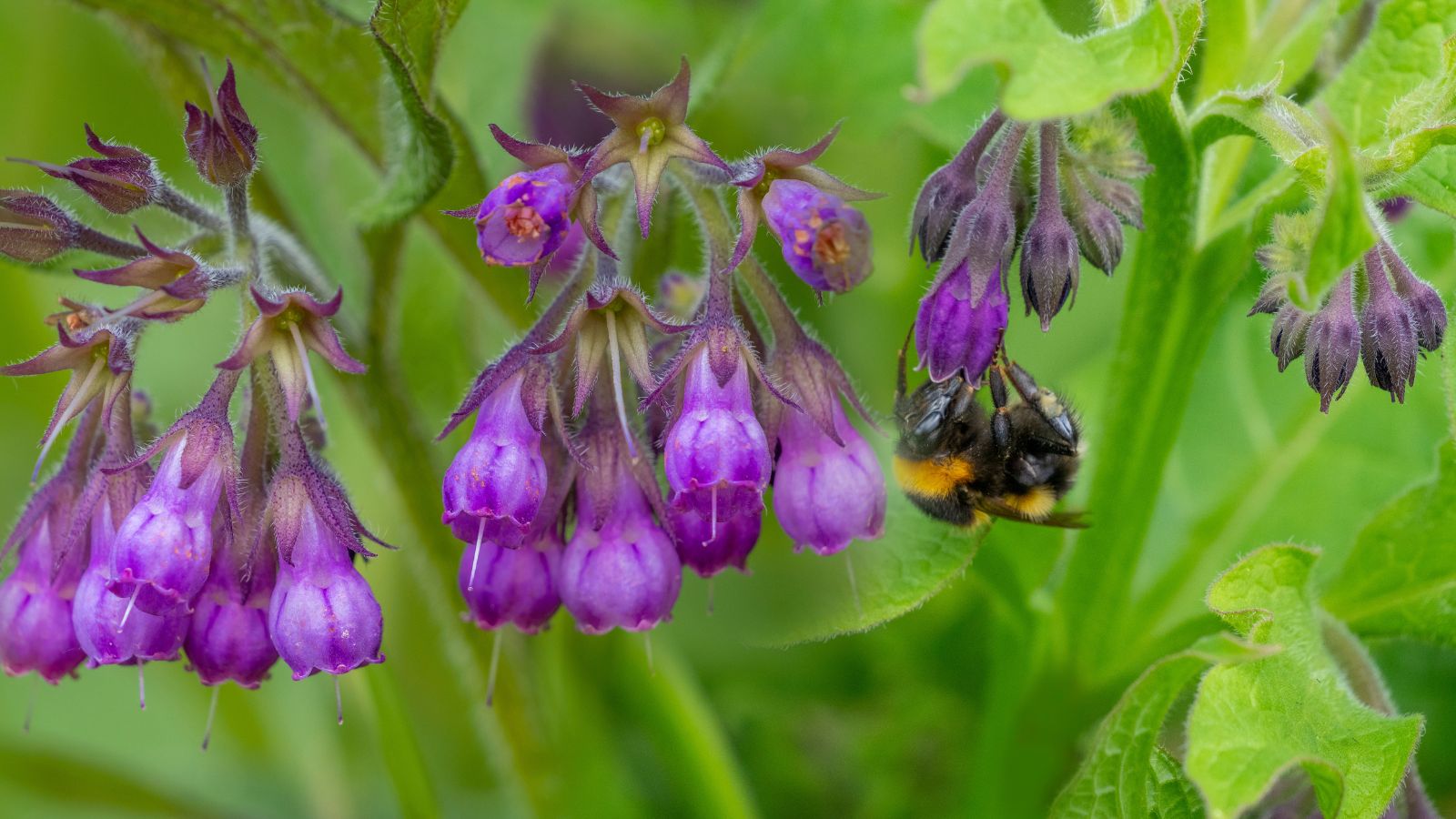

Comfrey flowers enchantment to pollinators and completely different helpful bugs. The huge leaves moreover current shade and moisture to beetles and completely different bugs vital to a healthful ecosystem. Consider, though, that it might be detrimental to ecosystems the place it is classed as an invasive species.
Planting
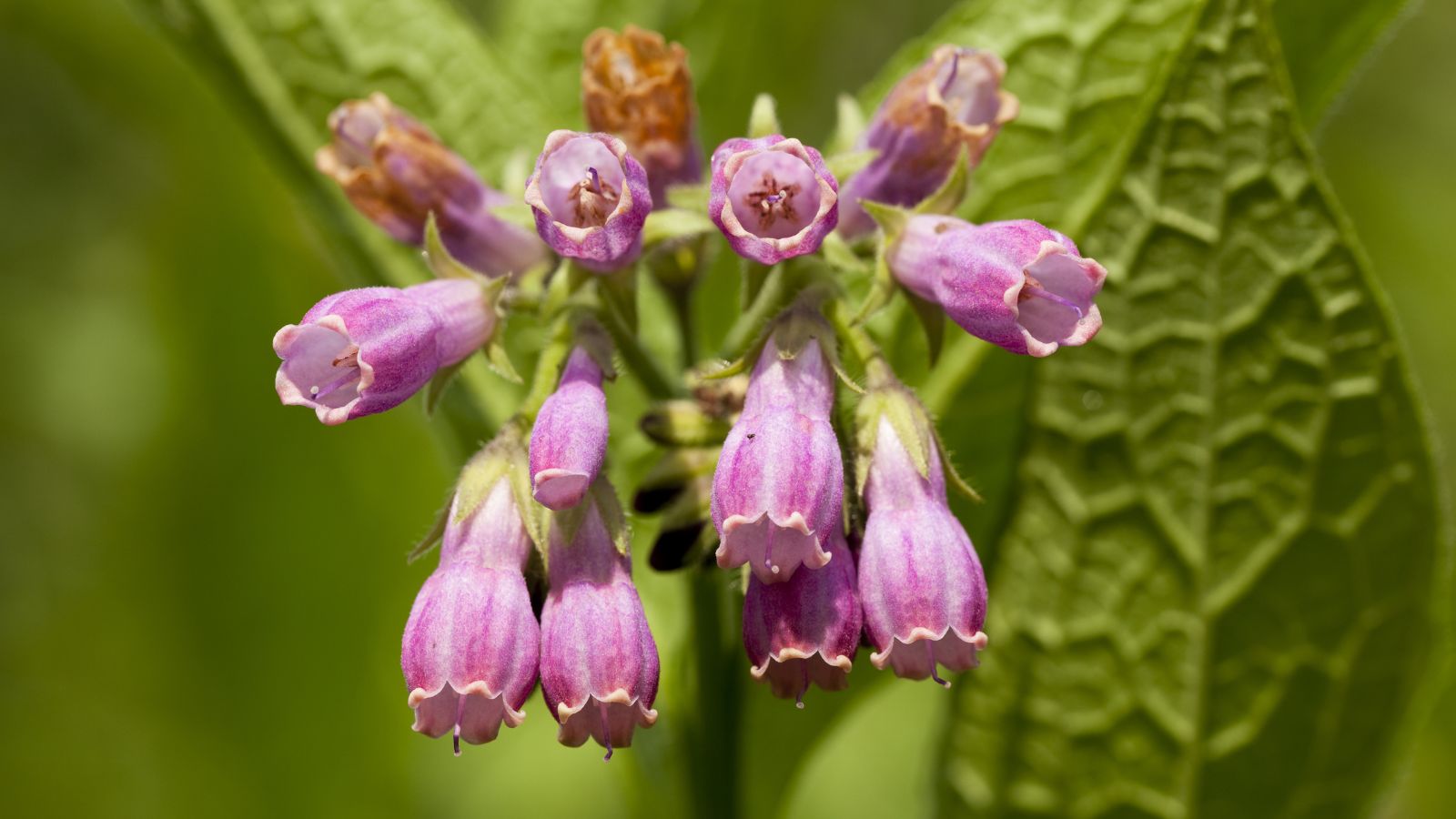

Comfrey crops are tolerant of most rising conditions nonetheless thrive in full photo voltaic to partial shade and moisture-retentive soils.
Space is a vital concern to ponder sooner than planting comfrey. Comfrey grows vigorously, sometimes doubling in measurement yearly. Choose a spot the place there could also be enough room to allow comfrey to develop and the place it gained’t overshadow completely different crops.
Container rising is an effective risk in case you’re in want of space. Develop comfrey in huge, deep containers that may accommodate the plant’s deep taproot. Raised beds are one different great risk that may comprise the roots.
The best way to Develop
Listed under are some tips on rising comfrey at residence, although this unimaginable plant roughly takes care of itself.
Gentle
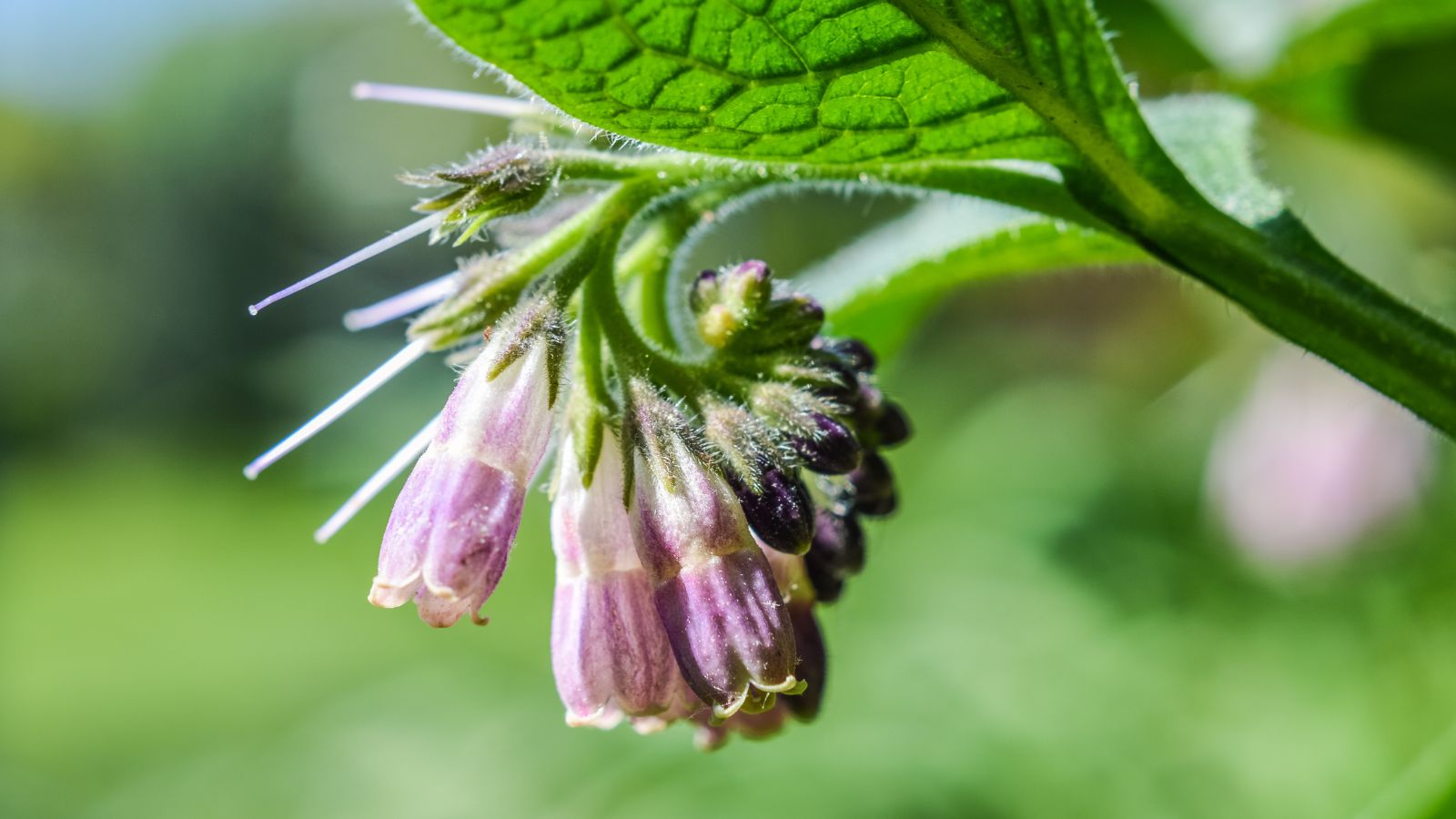

Comfrey grows biggest in full photo voltaic to partial shade, requiring a minimum of three to 4 hours of direct daylight per day. In scorching climates, plant comfrey the place it could actually have shade in the middle of the most popular time of the day.
Water
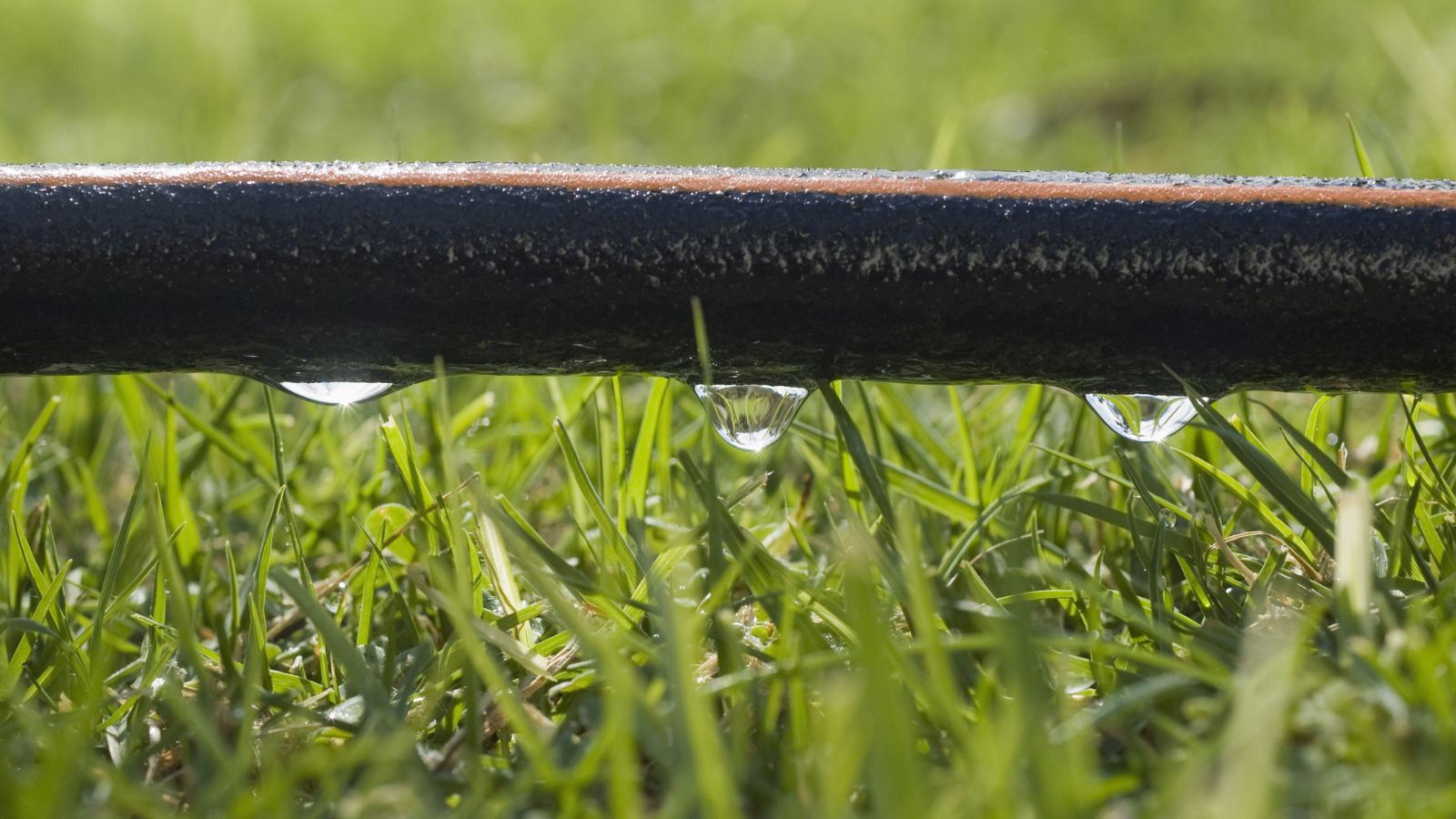

Comfrey enjoys moist soil conditions nonetheless might be surprisingly drought-tolerant. The tap roots can entry water deep inside soils that completely different crops can’t attain. Watering as quickly as each week with soaker hoses is correct. When the plant begins to die once more in winter, stop watering.
Soil
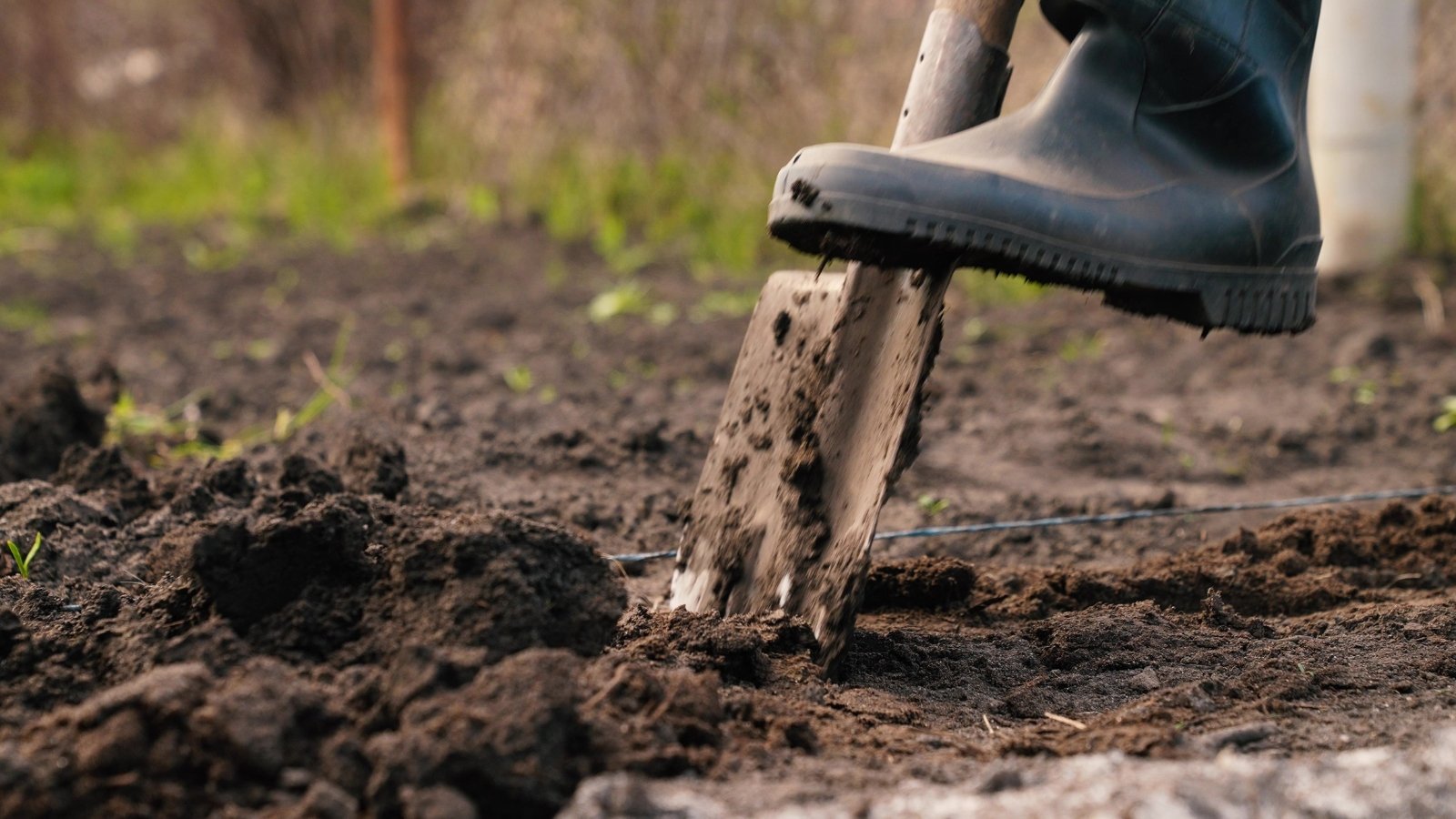

Loamy, well-draining nonetheless moisture-retentive soil is biggest for rising comfrey, nonetheless it could actually tolerate most soil varieties along with heavy clay or sandy soil. The deep faucet roots help break up clay soils in preparation for rising completely different crops. The actually helpful soil pH is between 6.0 and 7.0.
Temperature
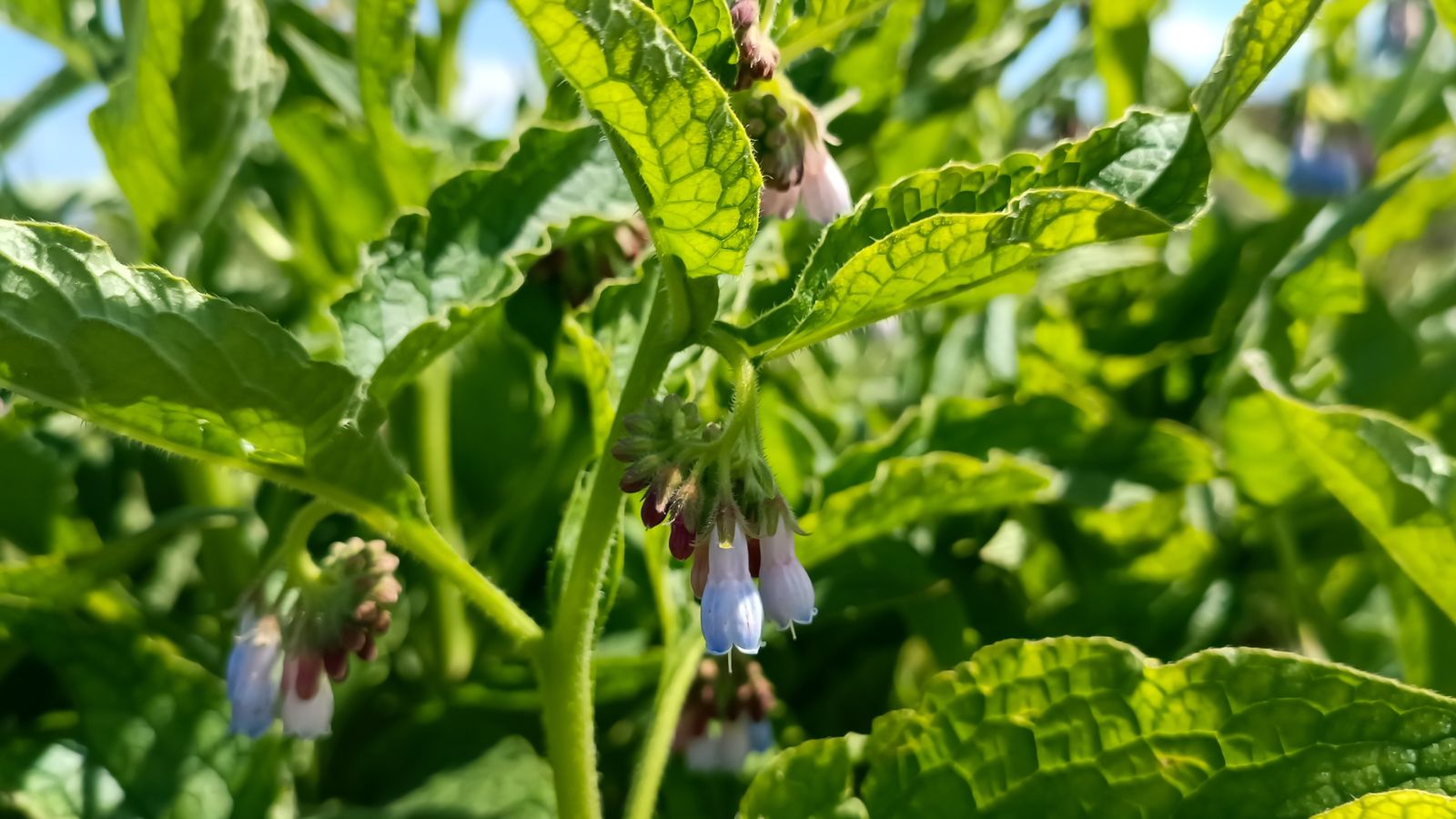

This plant is suitable to develop in USDA zone 4-8 with temperatures ranging from -40 to 80°F (-40 to 27°C). Your plant can wilt in extreme temperatures and may endure frost hurt if uncovered too early throughout the season.
As an herbaceous perennial, this plant will emerge early throughout the yr when conditions are correct. Nonetheless, it could actually revenue from fleece or frost coverings if late frosts are forecast.
Fertilizing
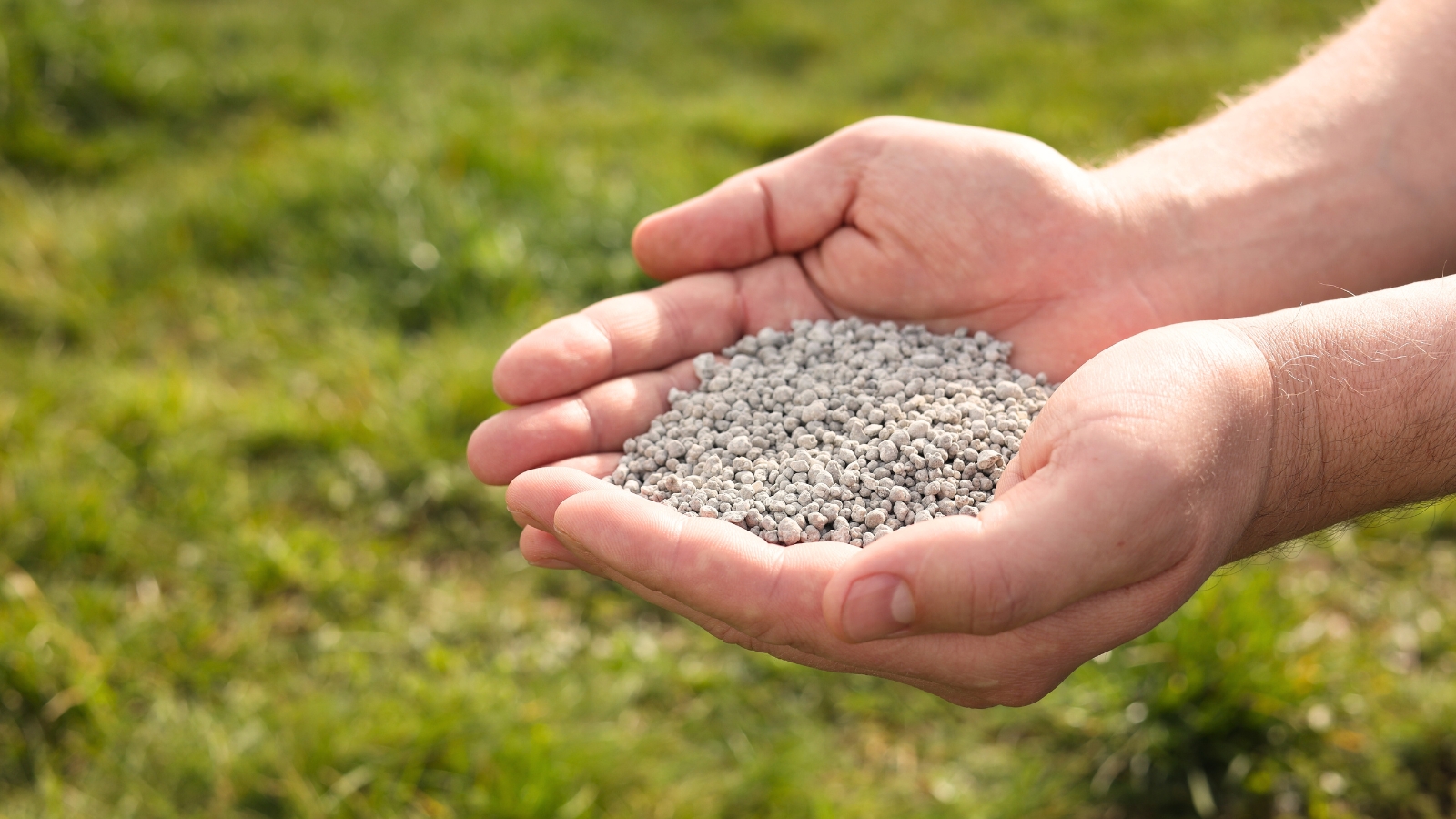

Comfrey can tolerate poor soil conditions. It ought to finally amend the soil by the use of the decomposition of its private foliage. In case your plant is struggling to get established, feed the comfrey with a liquid seaweed fertilizer or a low-potency balanced pure granular fertilizer.
Most of its desires will possible be lined by a nitrogen-based for good foliage enchancment, nonetheless the completely different nutritional vitamins are important for flowering.
Repairs
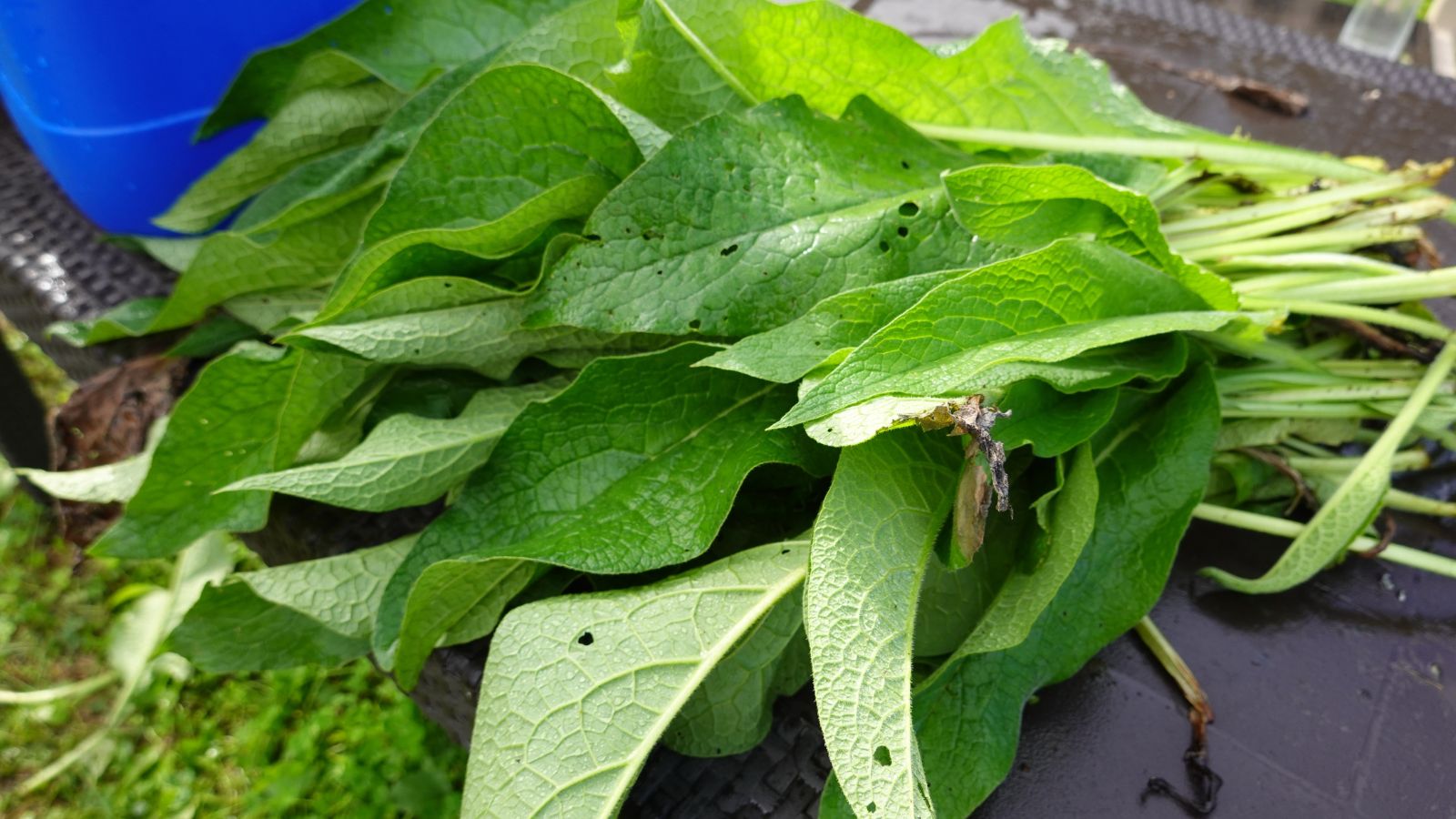

Comfrey grows shortly all via the spring and summer season months. Within the discount of the leaves to flooring stage three to 4 events in a season and use as fertilizer, mulch, and further. Inside 4 to six weeks, the leaves are ready for harvest as soon as extra.
If comfrey crops are left unpruned, the flowering stems flip into weak and collapse on the underside. Regrowth happens naturally and shortly after this. What you are left with is a giant untidy, unattractive comfrey mess. Pruning recurrently will protect your comfrey patch neat and tidy and less complicated to work with.
When rising Symphytum officinale, pruning sooner than flowers set seed will limit the amount of self-seeded comfrey crops popping up spherical your yard.
Propagation
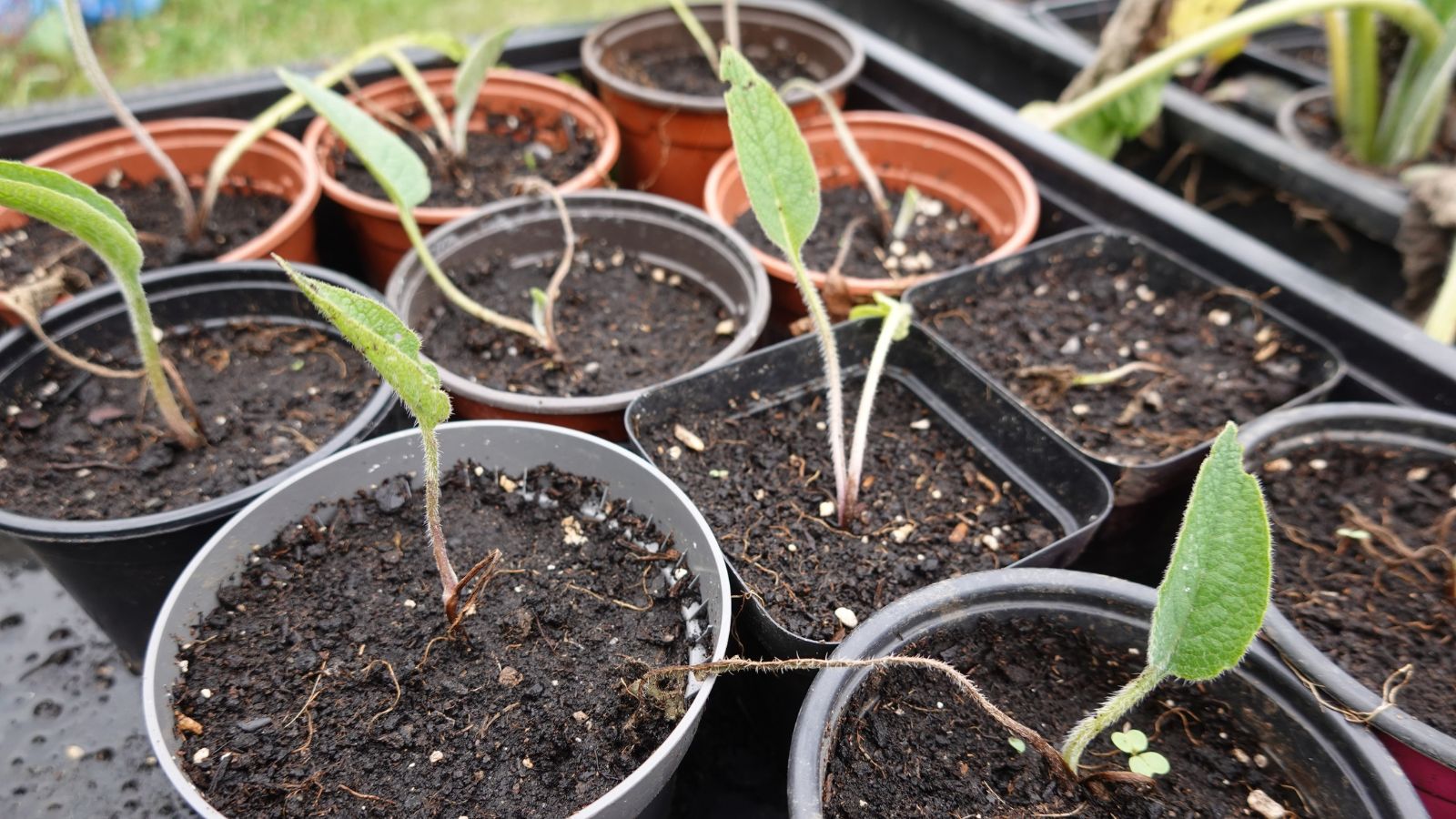

Comfrey propagates biggest from cuttings or division. Propagation from seed tends to be sluggish and erratic. Symphytum officinale is likely to be propagated by seed, root cuttings, and division. The seeds of Symphytum x uplandicum flowers are sterile because of this reality root cuttings and division are the precept selections for varieties from this species.
Sowing Seed
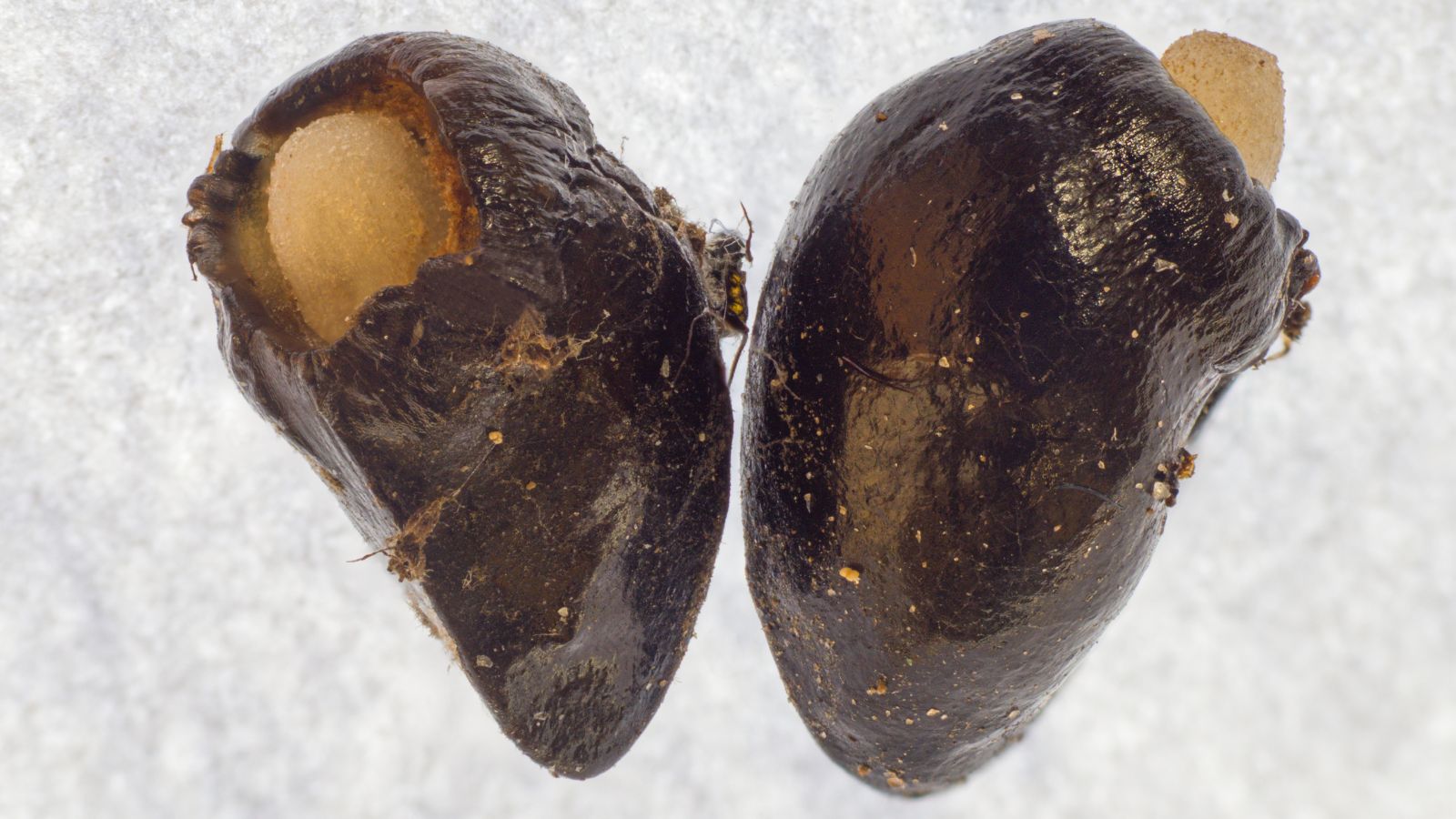

Sow seed in spring in seed or module trays. Germination is likely to be sluggish and erratic, so don’t concern if some crops battle. Preserve seedlings moist and plant out into their final rising positions finally menace of frost has handed.
Root Cuttings
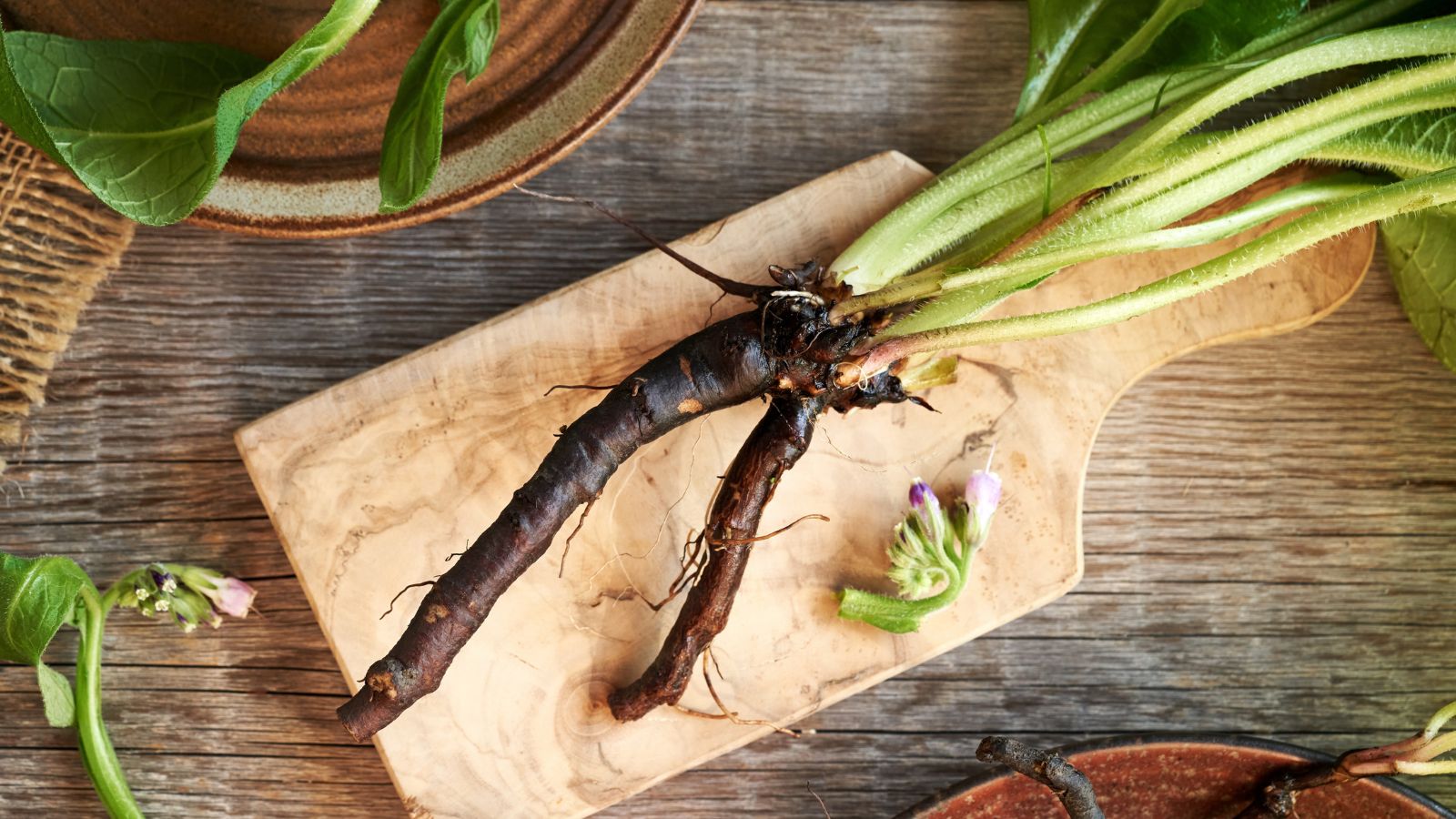

Take root cuttings in spring and autumn. Merely dig up a portion of the plant and cut back away the amount of root needed. Reduce roots into one-inch lengths and plant one inch deep in a pot stuffed with compost. Cowl with one inch of compost and protect moist.
When shoots appear and roots begin to poke out the underside of the pot, they’re in a position to plant out.
Propagation from root cuttings is easy because of almost all elements of the roots will produce new crops. This can set off points for people wishing to develop comfrey as inexperienced manure, resulting in a large number of latest crops which might be robust to eradicate.
When shifting a mature plant to a model new location, be sure you dig up your full root ball because of even considerably little little bit of root left behind will develop once more and multiply.
Division
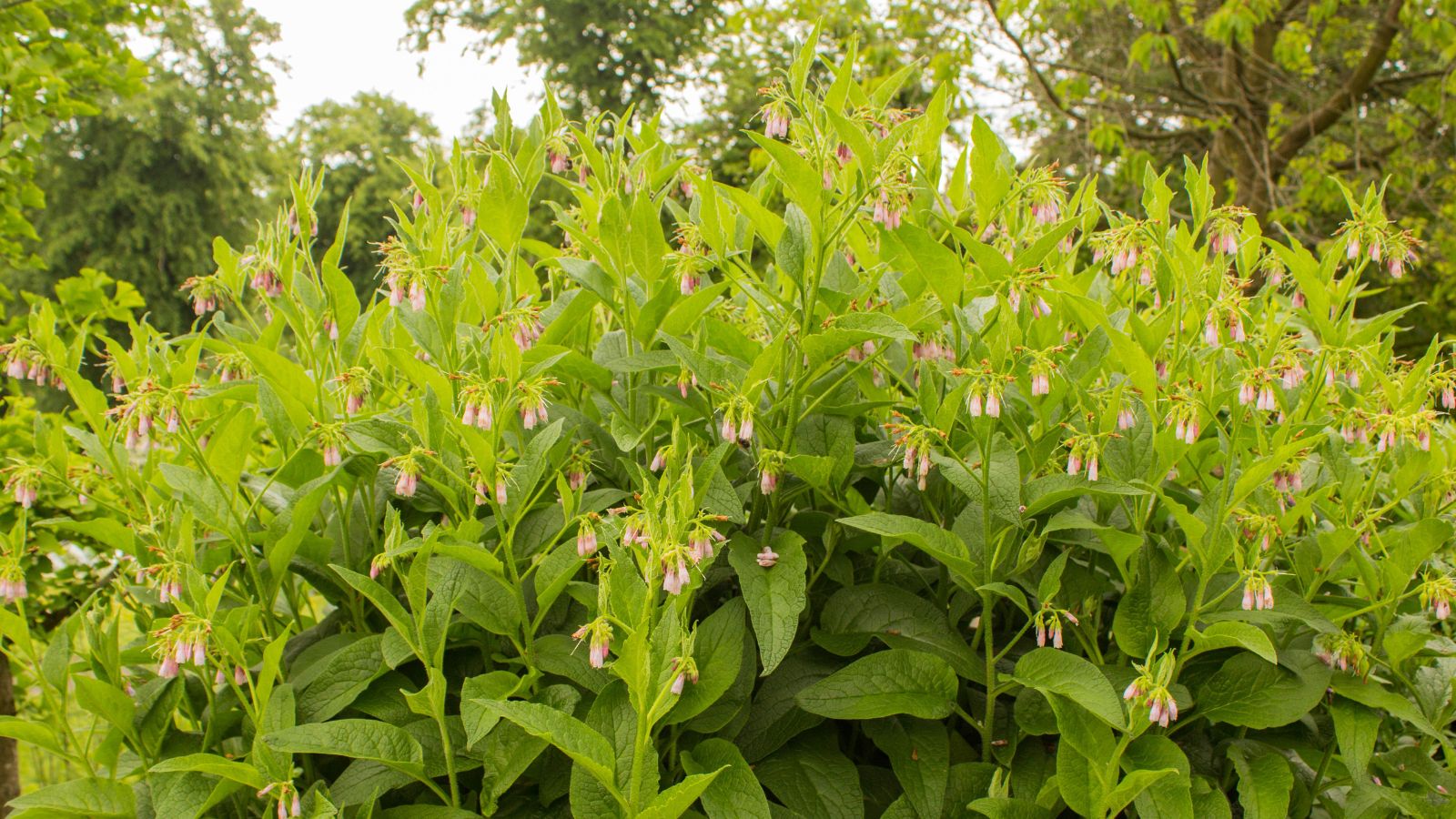

Divide crops in autumn and plant of their new areas straight away. Merely dig up your full plant and, using a spade, slice by the use of the comfrey crown to make the divisions.
Widespread Points
Comfrey is likely to be affected by a few widespread points. Proper listed below are some issues to look out for.
Vigorous Growth
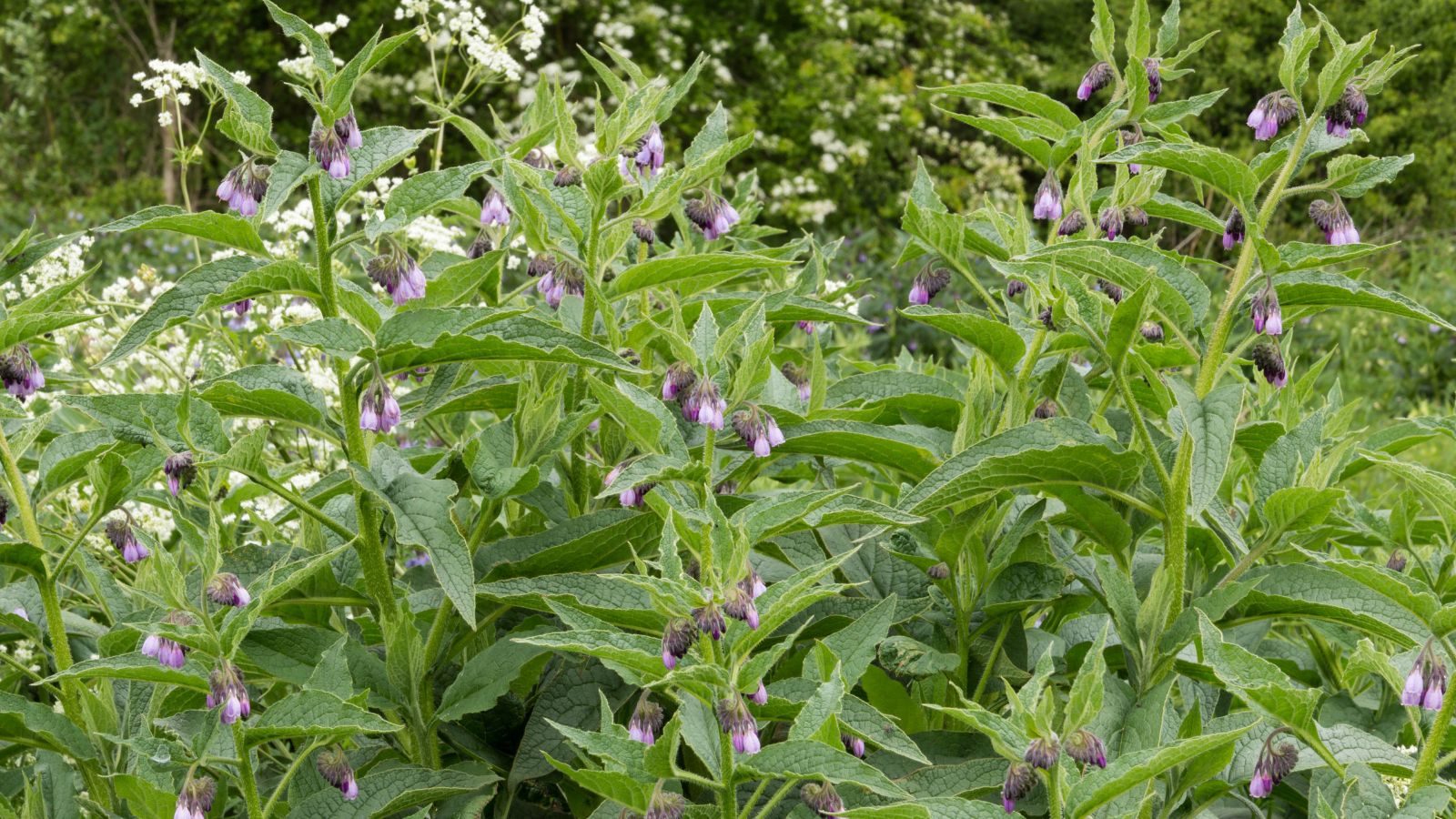

Mature comfrey crops can flip into unruly throughout the yard and look untidy if not saved in kind. Prune crops once more to flooring stage three to 4 events a season and chances are you’ll be rewarded with an exquisite nutrient-rich mulch and pure fertilizer. Dividing your comfrey every few years helps to take care of on prime of its sluggish nonetheless persistent unfold.
Pests
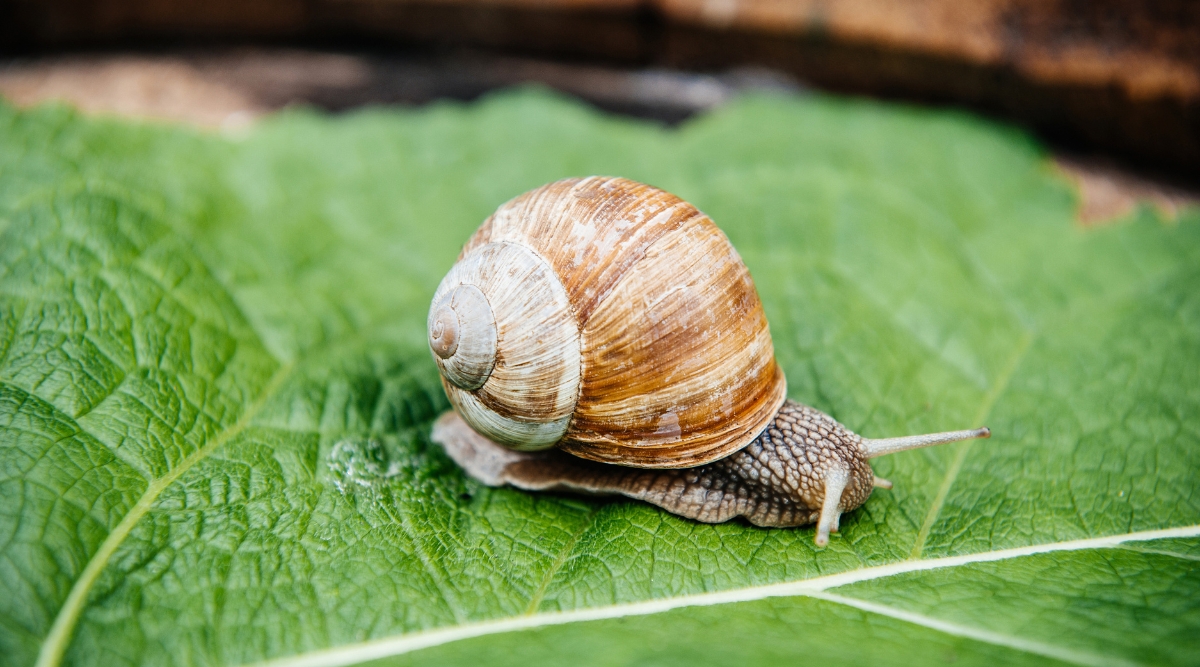

Slugs and snails assault youthful comfrey shoots as they emerge devouring them fully and leaving holes in stems. Look out for the trademark glistening slime path as proof. Reduce populations by eradicating their daytime hideaways and breeding grounds like damp moist picket and weed matting.
Take away by hand on sight (biggest outcomes at night) or go away beer or oatmeal traps that could be collected and discarded throughout the morning. As a ultimate resort use pure slug/snail pellets. Be taught the label rigorously to ensure they will not damage completely different wildlife or pets.
Illnesses
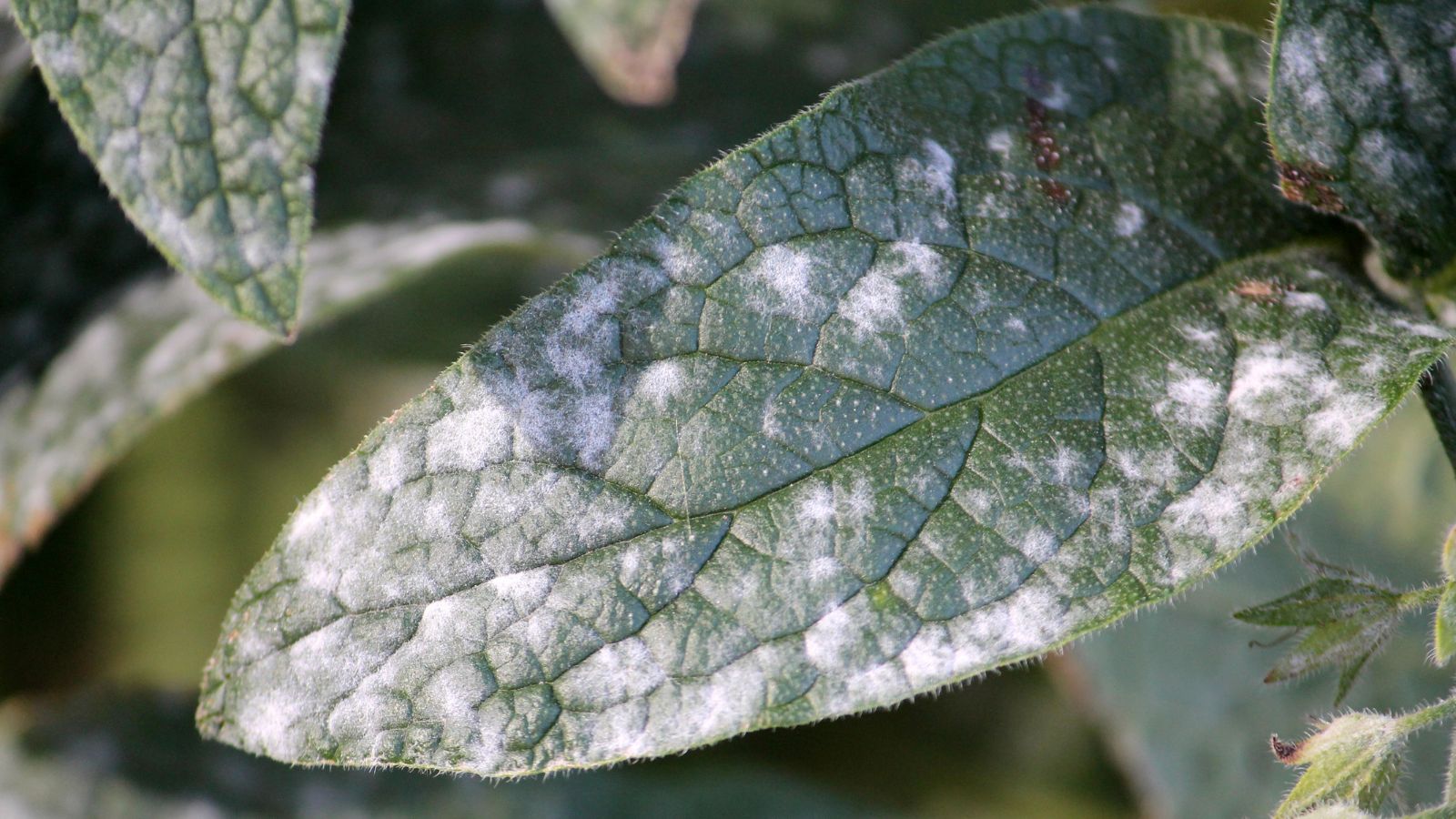

Powdery mildew thrives in extreme humidity, leaving a thick white fungal growth on leaves that inhibits photosynthesis and hinders growth. Maintain good yard hygiene, eradicating contaminated foliage to forestall the sickness from spreading and reinfection in subsequent years. Current enough daylight and good air circulation. Copper fungicide might be utilized as a preventative, nonetheless it could actually affect pollinators.
Comfrey rust is a fungal sickness that weakens crops and stunts growth. It appears as orange spots on the leaves containing spores that will infect neighboring crops. Take away contaminated leaves at first sight and throw them away. Don’t compost them as a result of the spores can overwinter in soil and compost heaps and reinfect crops the subsequent yr. An utility of copper fungicide would possibly decelerate reappearance. Russian comfrey tends to be additional resistant than completely different species.
Incessantly Requested Questions
It is not illegal to develop comfrey throughout the US. It is, nonetheless, illegal to advertise comfrey as a medicinal herb for interior use because of the pyrrolizidine alkaloids contained throughout the leaves might trigger excessive liver hurt when taken internally and may even be absorbed by the use of the pores and pores and skin when used as a medicinal poultice. This generally is a good one to take care of in gardens for all of its permaculture benefits, nonetheless using comfrey as a therapeutic herb is simply not likely helpful.
Comfrey is rich in nutritional vitamins making it an exquisite fertilizer for fruiting and flowering crops.
Comfrey is simply not safe for pets to devour for the same function it is banned for human consumption. The pyrrolizidine alkaloids are equally damaging to animals. Pets have to be averted comfrey crops in the event that they’re susceptible to nibbling on plant leaves.
[ad_2]
Provide hyperlink
